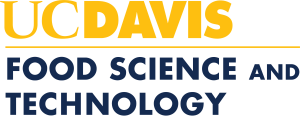(3 units) WINTER QUARTER
COURSE GOALS: To develop an understanding of the chemistry of lipids, the unique structural and associative properties of lipid molecules which distinguishes them as a class and forms the basis for an understanding of the nutritional biochemistry which describes and seeks to predict the physical and biological functions of lipids in living tissues.
COURSE FORMAT: The course will consist of three lecture/discussion hours per week. One lecture per week will be orchestrated as an in-depth round table discussion of a recent publication dealing with a particular research topic. Grades to be based on two exams, weekly discussion, problem sets and term paper.
TOPICAL OUTLINE:
- Lipids: (a) structure, solubility, association properties (films, soaps micelles); (b) methods of extraction/analysis of lipids
- Fatty acids: (a) structure, cis/trans isomers, nomenclature, n families (b) biosynthesis, oxidation, tissue, food composition, human vs. non-human milks
- Triglycerides: (a) structure, polymorphism; (b) refining, modification, cocoa butter, milk chocolate
- Triglycerides: (a) emulsions, absorption, digestibility; (b) metabolism, transport
- Phospholipids: (a) structure, bilayers, membranes; (b) membrane properties
- Phospholipids: (a) metabolism, lipid classes; (b) acyl specificity and function
- Sterols: (a) structure, properties in membranes; (b) cholesterol biosynthesis, transport
- Lipid Peroxidation: (a) Initiation Mechanisms; (b) anti-oxidants lipid oxidation in vivo
- Essential Fatty Acids: (a) Eicosanoids/Acyl ceramides; (b) Formation of Eicosanoids-dietary manipulation
